London The first photos from the James Webb telescope, revealed this week by NASA, have stunned the world and scientists with their beauty and the possibilities to advance their understanding of the secrets of the universe.
No telescope had gone this far before and sent such sharp and accurate images. But that doesn’t mean that its predecessors like Hubble or the European Space Agency’s Herschel should be humiliated or forgotten.
As soon as James Webb debuted, at Christmas 2021, British professor of astronomy, Carol Haswell, a member of the country’s Royal Astronomical Society, compiled a selection of photographs that are true works of art that have left their mark on the history of universe research. . . .
Telescope photos that go beyond beauty
In an article on the academic portal The Conversation, he explained the difference between James Webb and the telescopes before him.

Astronomers can gain unique insights by building telescopes that are sensitive to the light of “colors” beyond what our eyes can see. The familiar rainbow of colors is just a small part of what physicists call the electromagnetic spectrum.
Beyond red is infrared, which carries less energy than optical light. An infrared camera can see objects that are too cold for the human eye to detect.
In space, he can also see through the dust that would otherwise completely obscure our view.”
Still, images from telescopes before the much less advanced James Webb are fascinating for the abundance of colors and what they show (to scientists like Professor Haswell) those who have spent their lives studying the sky. Look at his selection.
“Jupiter Blues”
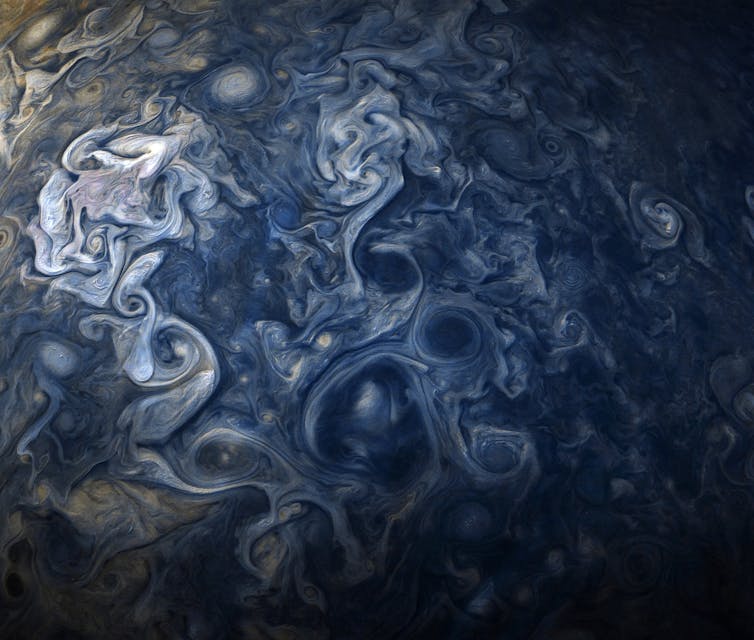
Image processed by Gerald Eichstädt and Sean Doran (CC BY-NC-SA) based on images provided by NASA/JPL-Caltech/SwRI/MSSS
The professor explains that the image was taken in October 2017 by NASA’s Juno Mission, which studies the planet Jupiter and shows a cloud system in the planet’s northern hemisphere. These are the first telescopic images of one of Jupiter’s poles.
The images reveal complex, cyclone-like flow patterns in Earth’s atmosphere and dramatic effects caused by cloud diversity at different altitudes, sometimes casting shadows in the lower cloud layers.
He says he chose the photo for the beauty and scientific information in the image:
“The areas of the planet near the north pole turned out to be very different from previous photos showing areas closer to the equator. By looking at Jupiter’s poles, Juno showed us a different view of a familiar planet.”
Eagle Nebula (photo from Herschell telescope)
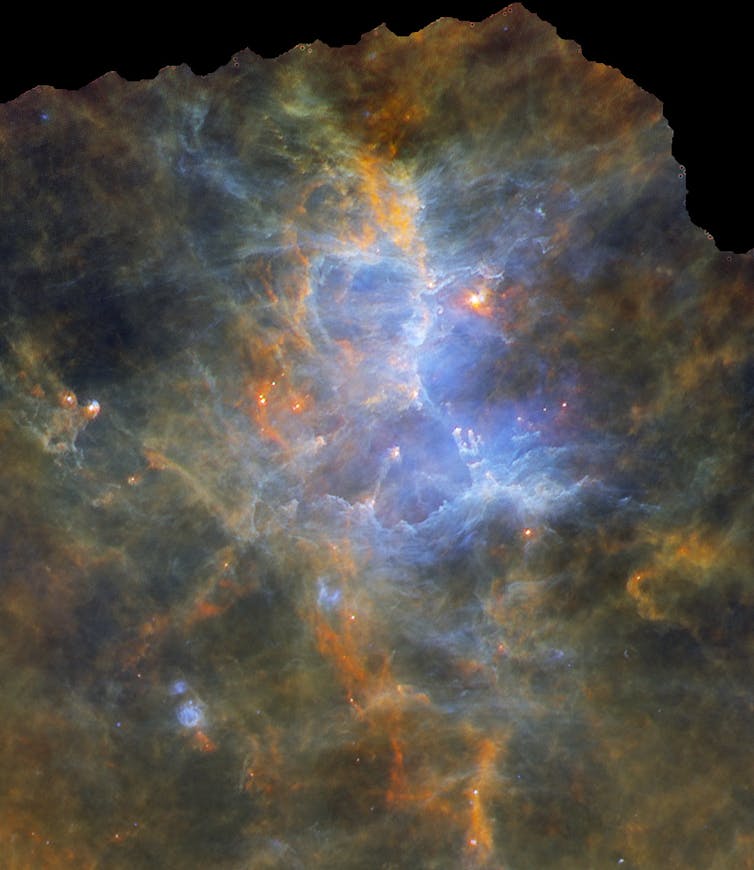
G. Li Causi, IAPS/INAF, Italy
Photo of Hercshel telescope shows Star formation in the Eagle Nebula, also known as M16, and reveals regions according to professor dense, dusty cosmic clouds where star formation takes place. He explains the image:
“The Nebula is a gas cloud in space. The Eagle Nebula is 6,500 light-years from Earth, which is pretty close to astronomical standards. This nebula is a powerful star forming region.
A close-up view of a feature near the center of this image was called the “Pillars of Creation.”
Looking slightly to the left and looking like a thumb and forefinger, these pillars protrude into a void within a giant cloud of molecular gas and dust.
The void is being swept away by winds emanating from energetic newly formed stars deep in the cloud.”
Also Read | Saturn click in Alagoas by Brazilian controversies Greenwich Observatory award

Also Read | Saturn click in Alagoas by Brazilian controversies Greenwich Observatory award
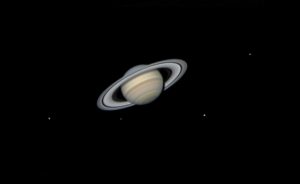
Galactic Center (photo from Hubble and Spitzer telescopes)
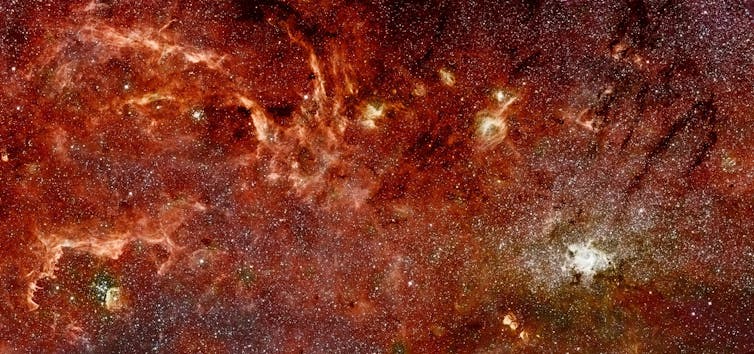
Hubble Telescope Photograph /NASA, ESA and QD Wang (University of Massachusetts, Amherst); Spitzer: NASA, Jet Propulsion Laboratory, and S. Stolovy (Spizer Science Center/Caltech)
Professor Carole Haswell explains that the image “seems deeper into space to the center of our Milky Way.” It was also done with infrared light, combining data from two NASA telescopes, Hubble and Spitzer.
The bright white region in the lower right corner of the image is the center of the galaxy. It contains a massive black hole called Sagittarius A*, a star cluster, and the remnants of a massive star that exploded as a supernova about 10,000 years ago.
It also highlights other star clusters:
“In the lower left corner of the image is the Quintuplet cluster inside a bubble where stellar winds are cleaning local gas and dust.
In the upper left corner is a cluster called Arches, named for the illuminated gas arcs that stretch above and beyond the image. These two clusters contain some of the most massive stars known to science.”
Abell 370 (Hubble Telescope photo)
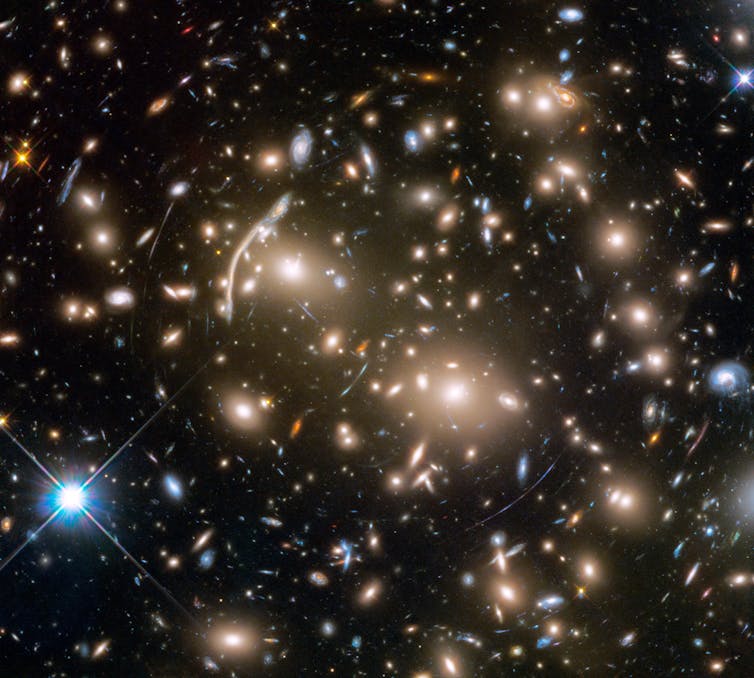
NASA, ESA and Team J. Lotz and HFF (STScI)
At scales much larger than individual galaxies, the universe is structured as a web of filaments (long interconnected threads) of dark matter, according to the British professor of astrophysics. Some of the most impressive-looking objects are clusters of galaxies that form where the filaments intersect.
And they confirm the ancient scientific thesis of one of history’s greatest geniuses:
“If we look at nearby clusters of galaxies (relatively speaking, of course), we can see overwhelming evidence that Einstein was right when he claimed that mass curves space.
One of the best examples of this distortion of space can be seen in this photo from the Hubble Telescope. [ponto do universo] The Abell 370 was released in 2017.”
Abell 370 is a cluster of hundreds of galaxies about five billion light-years from Earth.
Haswell points to the long arcs of light shown in the image, which are magnified and distorted images of much more distant galaxies.
“The mass of the cluster bends space-time and bends the light of more distant objects, magnifying them, and in some cases creating multiple images of the same distant galaxy.
This phenomenon is called gravitational lensing because warped spacetime behaves like an optical lens.”
The teacher explains that the most striking of these magnified images is the thicker glowing arc located above and to the left of the center of the photo. Dubbed the “Dragon,” this arc consists of two images of the same distant galaxy on its head and tail. The superimposed images of several other distant galaxies form the arc of the dragon’s body,” he adds.
“These gravitationally magnified images are useful to astronomers because the magnification reveals more details of the object. In this case, the star population of the lensed galaxy can be studied in detail.
Hubble Telescope’s Ultra Deep Field
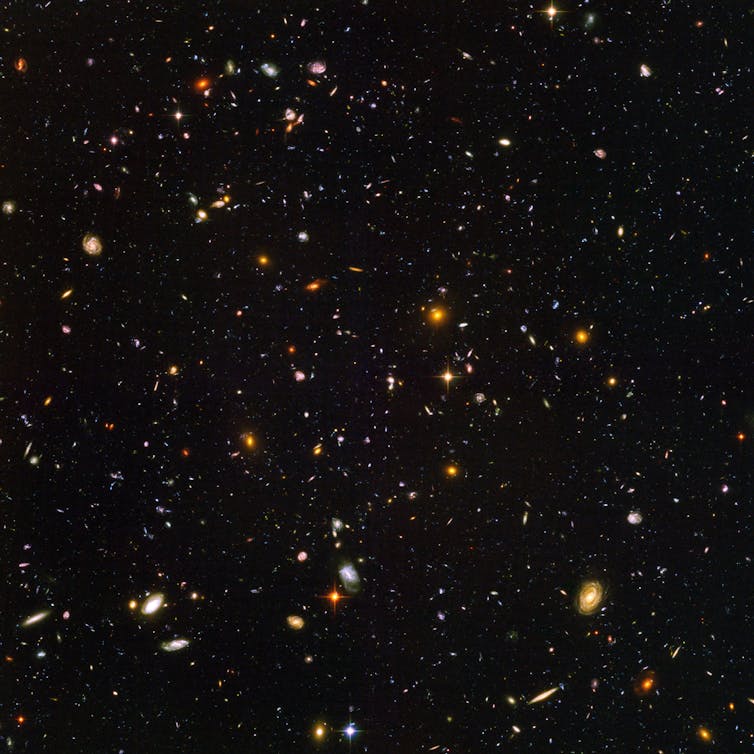
NASA, ESA and S. Beckwith (STScI) and HUDF Team / BY CC
Carole Haswell said astronomers decided to “an inspiring idea” to guide Hubble over a few days to an empty patch of sky to find out what extremely distant objects could be seen at the edge of the universe within range of the telescope.
The image shows Hubble’s Ultra Deep Field, which contains about 10,000 celestial bodies, almost all of which are very distant galaxies. Light from some of these galaxies has been traveling for more than 13 billion years, as the universe is only half a billion years old.
It highlights that some of these objects are among the oldest and most distant objects known, and marks an important moment in the evolution of the universe.
“Here we see the light of ancient stars whose local contemporaries are long dead.”
The earliest galaxies formed during the era of reionization, when the weak gas in the universe was first bathed in starlight and could separate electrons from hydrogen.
This was the last major change in the properties of the universe as a whole.”
read it too
source: Noticias
[author_name]